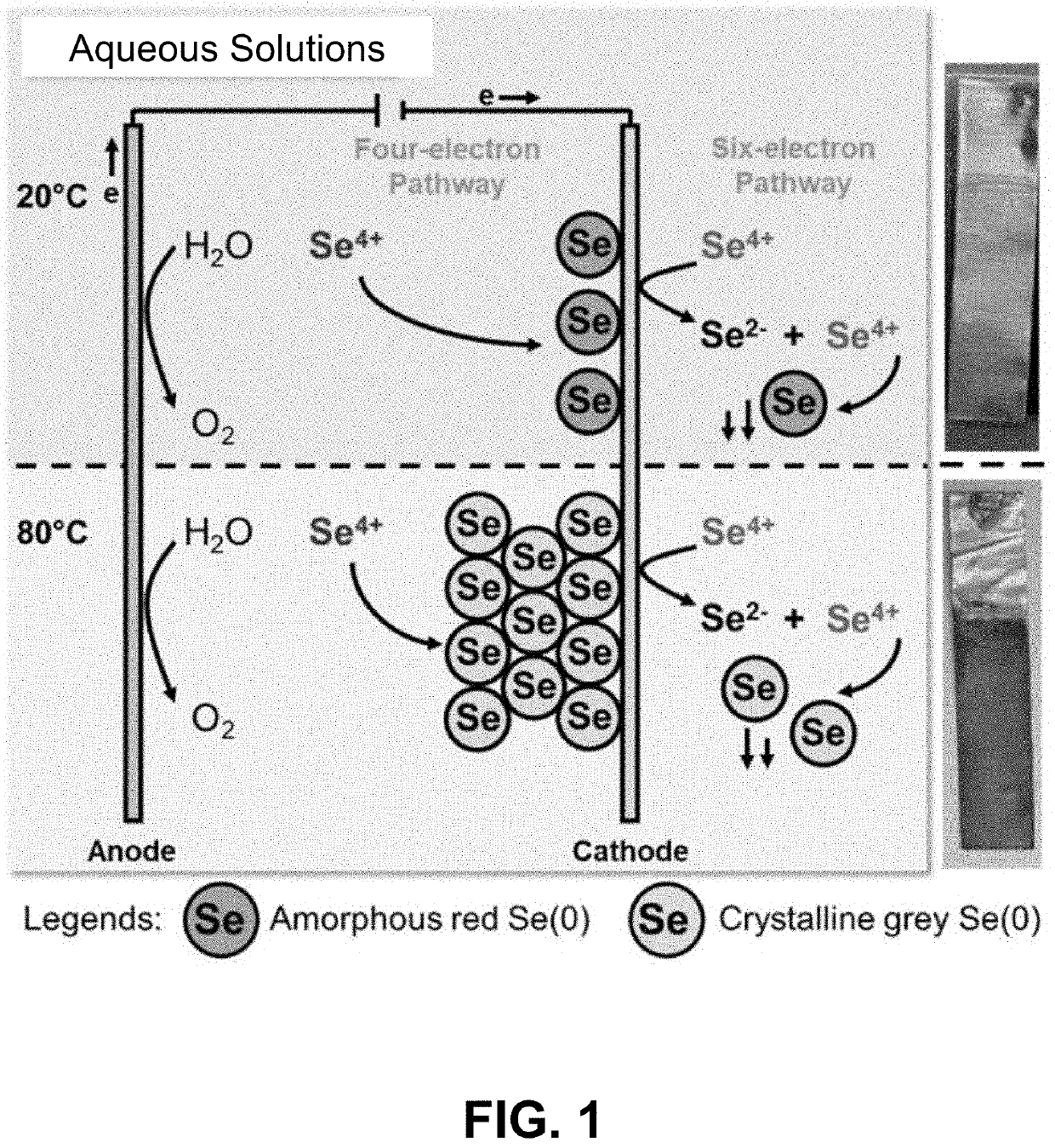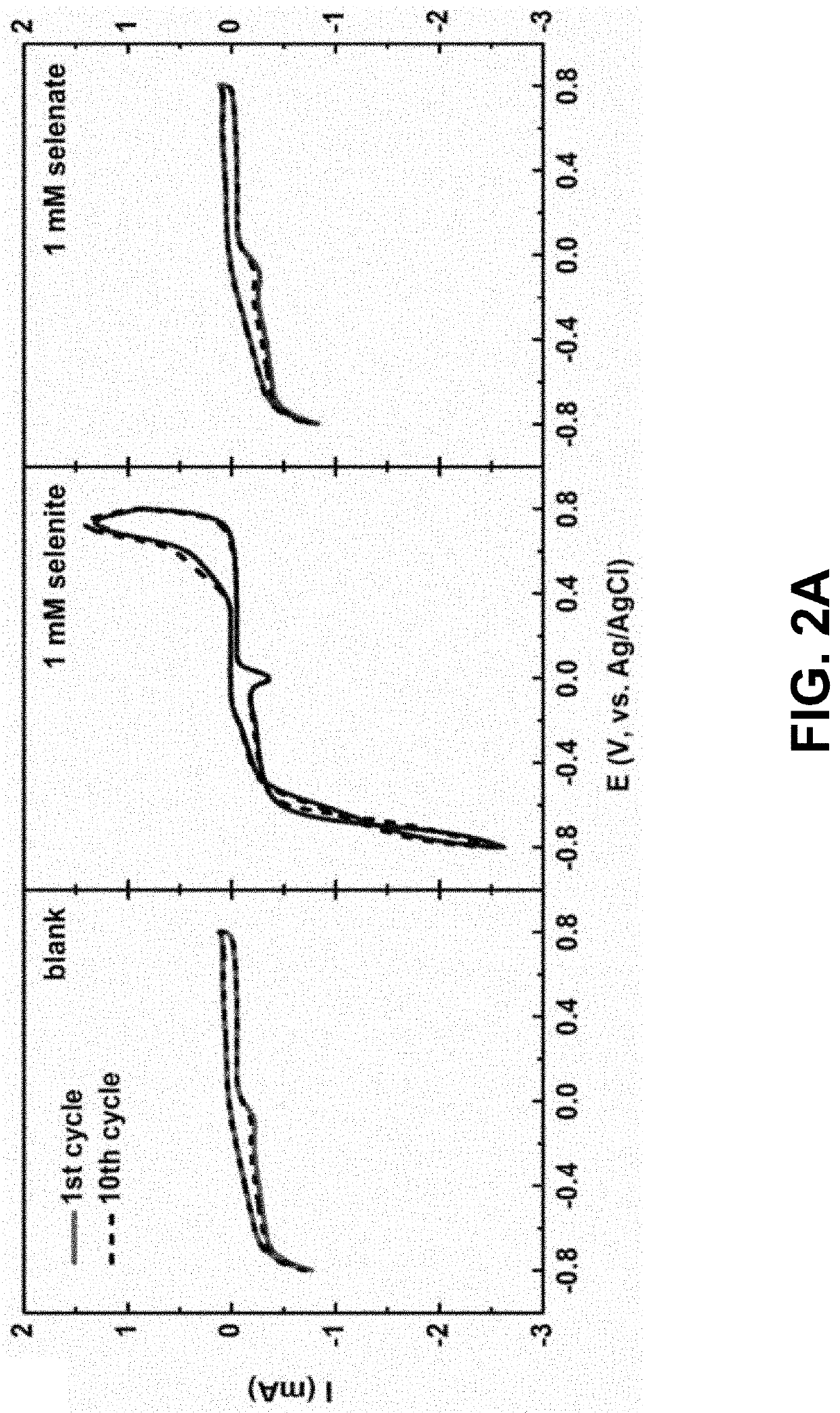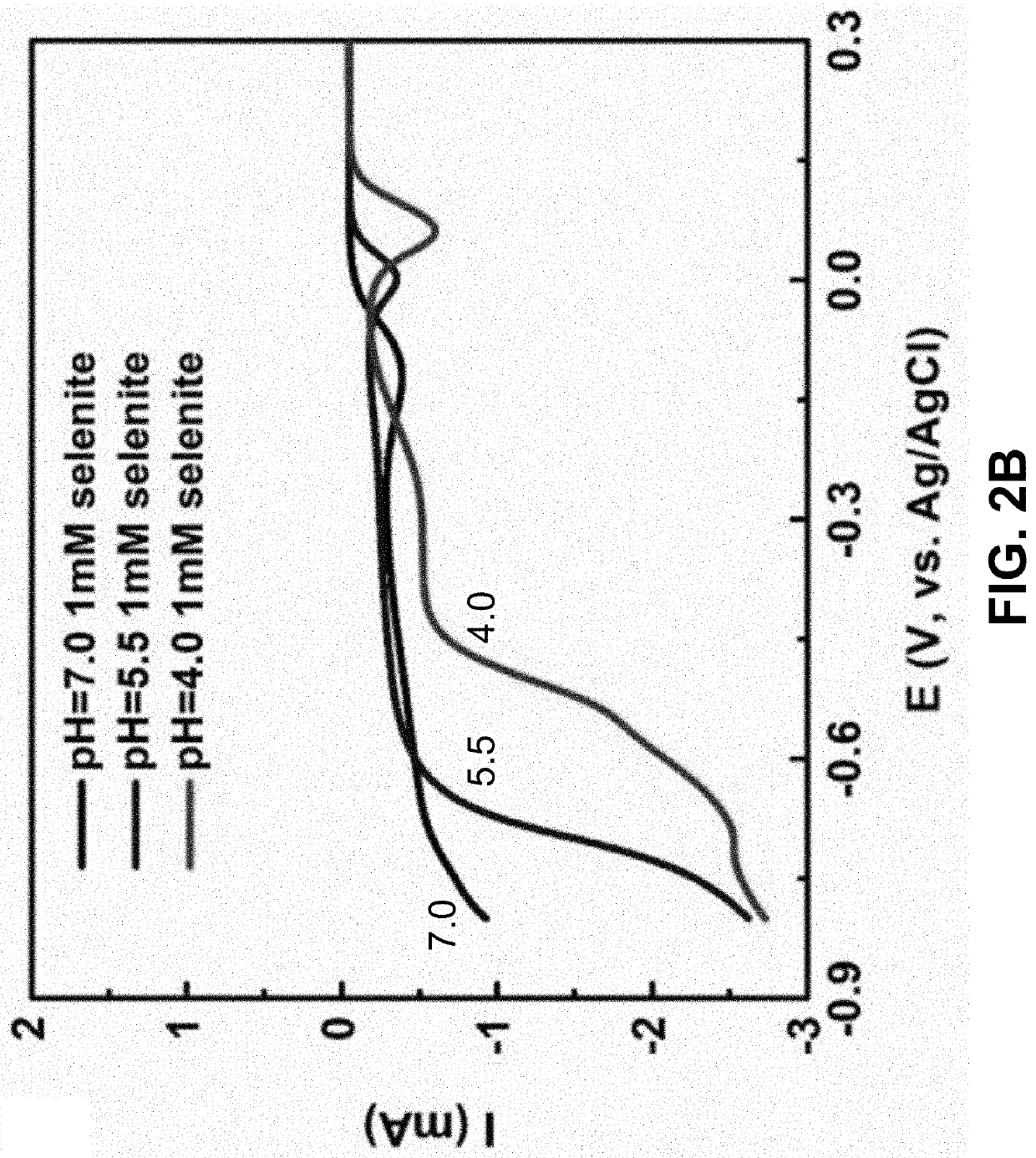Direct electrochemical reduction method for removing selenium from wastewater
a technology of selenium and wastewater, applied in the direction of water treatment parameter control, dispersed particle separation, separation processes, etc., can solve the problems of increasing the operating cost of biological processes, and affecting the bioavailability and bioaccumulation of compounds, so as to reduce the cost of solid waste disposal, reduce the cost of purchase, and reduce the effect of bioavailability and bioaccumulation
- Summary
- Abstract
- Description
- Claims
- Application Information
AI Technical Summary
Benefits of technology
Problems solved by technology
Method used
Image
Examples
Embodiment Construction
[0034]For the purposes of this invention, the thermodynamic and kinetic performance of SeDER was evaluated for environmentally relevant Se concentrations and pH ranges, while also proposing new operational strategies for optimizing SeDER process performance under these conditions. The inventors investigated (1) the feasibility of Se(IV)DER and Se(VI)DER in weakly acidic environments, (2) evaluated the effect of initial Se concentration and solution temperature on SeDER performance, (3) identified Se reduction pathways in simulated wastewater, and (4) quantified Se removal rate and Faradaic efficiency under long-term operation. The results from these studies resulted in energy-efficient and cost-effective electrochemical methods for meeting discharge requirements in a range of industrial and agricultural wastewaters and reducing Se contamination in local ecosystems.
[0035]Materials and Methods
[0036]Setup of the Three-Electrode Electrochemical System
[0037]The electrochemical cells had ...
PUM
| Property | Measurement | Unit |
|---|---|---|
| temperature | aaaaa | aaaaa |
| temperature | aaaaa | aaaaa |
| constant voltage | aaaaa | aaaaa |
Abstract
Description
Claims
Application Information
 Login to View More
Login to View More - R&D
- Intellectual Property
- Life Sciences
- Materials
- Tech Scout
- Unparalleled Data Quality
- Higher Quality Content
- 60% Fewer Hallucinations
Browse by: Latest US Patents, China's latest patents, Technical Efficacy Thesaurus, Application Domain, Technology Topic, Popular Technical Reports.
© 2025 PatSnap. All rights reserved.Legal|Privacy policy|Modern Slavery Act Transparency Statement|Sitemap|About US| Contact US: help@patsnap.com



